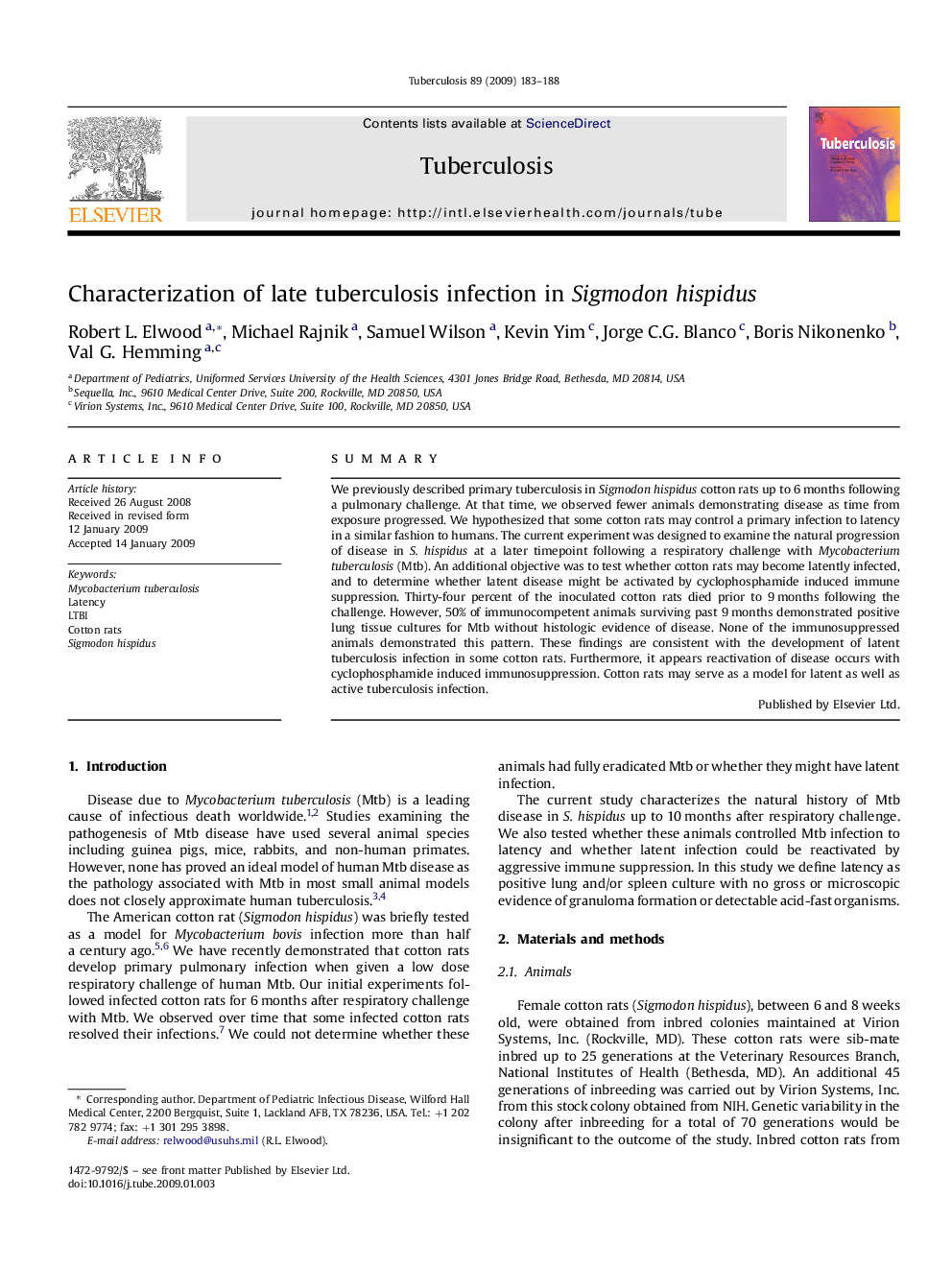| Article ID | Journal | Published Year | Pages | File Type |
|---|---|---|---|---|
| 2401893 | Tuberculosis | 2009 | 6 Pages |
SummaryWe previously described primary tuberculosis in Sigmodon hispidus cotton rats up to 6 months following a pulmonary challenge. At that time, we observed fewer animals demonstrating disease as time from exposure progressed. We hypothesized that some cotton rats may control a primary infection to latency in a similar fashion to humans. The current experiment was designed to examine the natural progression of disease in S. hispidus at a later timepoint following a respiratory challenge with Mycobacterium tuberculosis (Mtb). An additional objective was to test whether cotton rats may become latently infected, and to determine whether latent disease might be activated by cyclophosphamide induced immune suppression. Thirty-four percent of the inoculated cotton rats died prior to 9 months following the challenge. However, 50% of immunocompetent animals surviving past 9 months demonstrated positive lung tissue cultures for Mtb without histologic evidence of disease. None of the immunosuppressed animals demonstrated this pattern. These findings are consistent with the development of latent tuberculosis infection in some cotton rats. Furthermore, it appears reactivation of disease occurs with cyclophosphamide induced immunosuppression. Cotton rats may serve as a model for latent as well as active tuberculosis infection.
